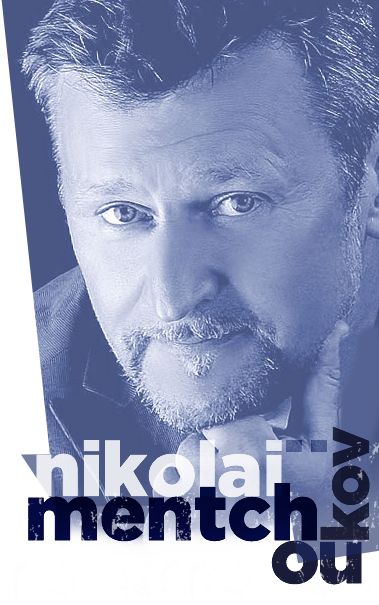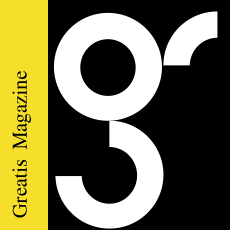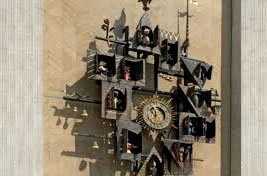
1980
My debut job post-college was as a puppet maker at a state puppet theater founded by the renowned puppeteer, Sergey Obraztsov.
While the role had a creative essence, it primarily involved engineering - I devised mechanisms enabling actors to synchronize puppet movements with their voiceovers.

1981
My stint as a conscript in the Soviet Army led to a unique project: hammering an incuse pattern on the training camp cafeteria ceiling, as ordered by your commanding officer. If that ceiling still stands in what is now within the territory of a different country, future archaeologists might find it a perplexing discovery.
1984
With the help of a friend, I landed a job as a set developer for stop-motion animation productions at the state animation studio, Soyuzmultfilm. Crafting miniature sets for these films felt like creating real movie sets on a small scale - I had a blast. Here's one of the short films with my credits for the production set.
Unfortunately, the studio shuttered its doors during Perestroika. Socialism was "de facto" dead, but capitalism wasn't "de jure" yet - it was a peculiar time. I picked up the skill of cooking a myriad of dishes using just one ingredient: potatoes.
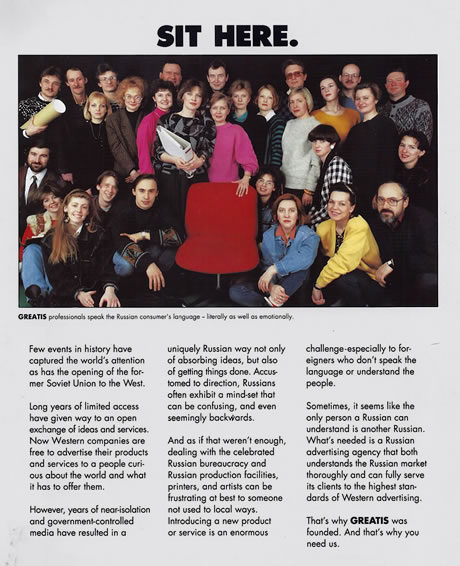
1987
It's a common misconception that advertising didn't exist in the USSR. In reality, government enterprises paid a small advertising tax, which contributed to the budgets of state industry-specialized advertising agencies. Primarily through print and posters, advertising played a role, and it was a lifeline for me as a freelance graphic designer during the economic downturn of the collapsing Soviet economy.
In 1987, I took the leap and founded Greatis, an advertising agency - one of the first private agencies in the USSR. By 1993, with a team of 110 people, Greatis had become one of the two largest agencies, capturing 50% of the advertising market in Russia.
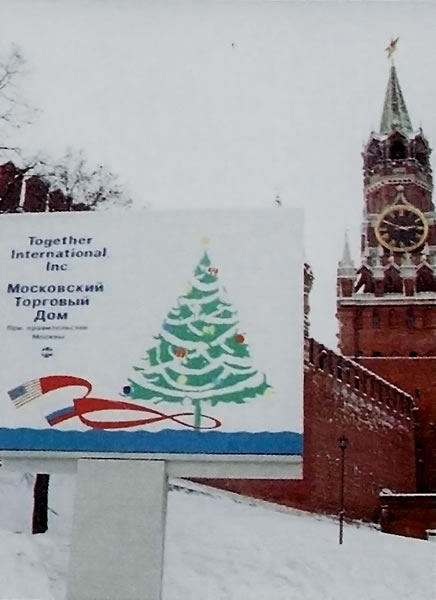
1989
In 1989, the Moscow government granted me permission to erect several billboards to gauge public reaction - most Russians had never seen billboards before. They even allowed one at the corner of Red Square. With the help of a friend's father, a military radar engineer, we designed a sturdy yet cost-effective billboard structure capable of withstanding Moscow's harsh winter winds. Within five years, I had built one of the largest billboard networks in Moscow. However, changes in regulations, influenced by corrupt officials and mafia involvement, turned this once-promising business venture into a nightmare.
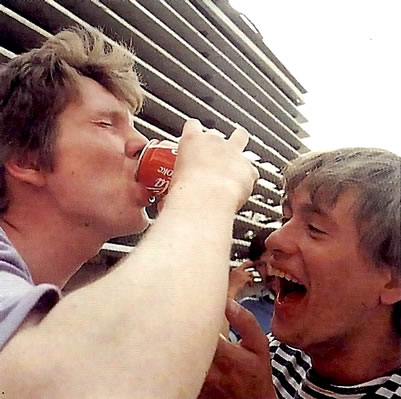
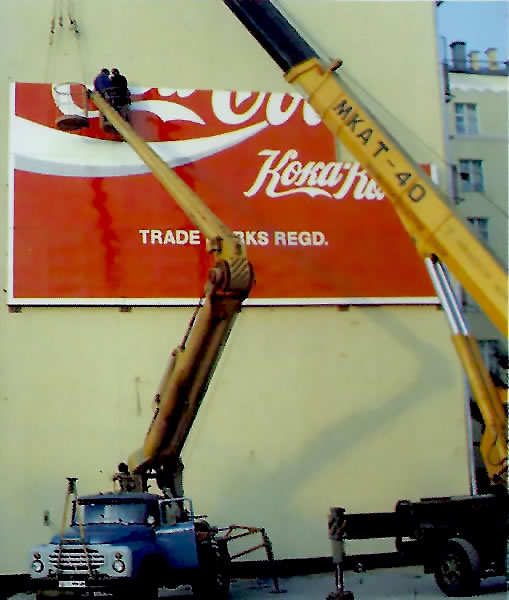
1992
The scale of the first wallboard in Moscow was indeed remarkable, marking a significant moment in history. Commissioned by Coca-Cola, it made a lasting impact. Ironically, its presence may have inadvertently boosted Pepsi's sales, as Coca-Cola wasn't widely available in stores yet, whereas Pepsi had been around since the 1980 Moscow Olympics. Many Russians believed the liquid in both bottles was the same, but some preferred Pepsi, thinking it was less addictive due to its lack of cocaine.
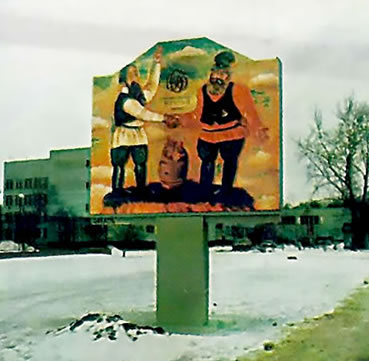
1990
In 1991, I introduced a novel approach to advertising in Russia by employing coordinated media-buying programs across TV, outdoor, and print platforms. Instead of merely informing about products and services, the goal was to initiate brand building. In a market characterized by high demand for everything and very low media-buying rates, we managed to build brands at an unprecedented pace. Each campaign was poised for success in this thrilling environment, where brand-building outpaced business development.
1993
In the USSR, television ads primarily took the form of announcements by TV anchors. However, a significant shift occurred with the introduction of the first TV commercials made using stop-motion animation technique. These commercials, produced for one of the first private banks, Russian Exchange Bank, marked a milestone in advertising history, airing nationally and pioneering a new approach to television advertising in the country.
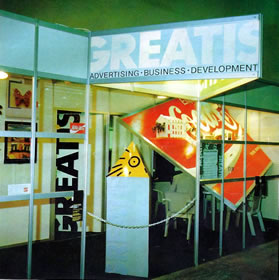
1993
First convention of advertising industry in Moscow. It became apparent that privately-owned agencies grew up and dominated the market while the state-owned agencies have became mostly obsolete.
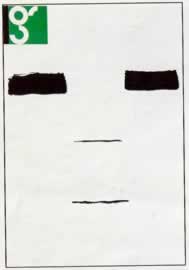
1992
Launching Greatis Magazine, the first private magazine on visual arts in Russia, wasn't something I would have done alone. A passionate editorial team approached me with the idea, and I saw its potential to be an educational and information-sharing tool for new creatives in the open market. Inspired by their enthusiasm, we set out to create a supportive community for budding artists.
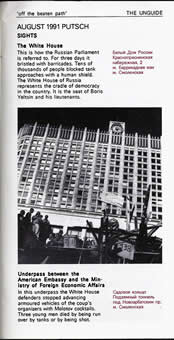
1991
The 1991 Soviet Coup indirectly facilitated the transition to an open market economy. Following this event, there was a surge in demand for political campaigns, and I was grateful to lead the first successful one.
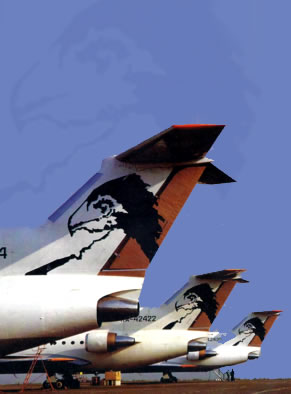
1995
Orel (Eagle) Avia, one of the first private airlines, had an unconventional beginning for its logo. The president, Tatevos Surinov, enthusiastically sketched it on napkins. Unsure of what to do with the sketch, I was drawn to the eagle's smirk and decided to transfer it directly from the napkins to the airplane tails, without any modifications.
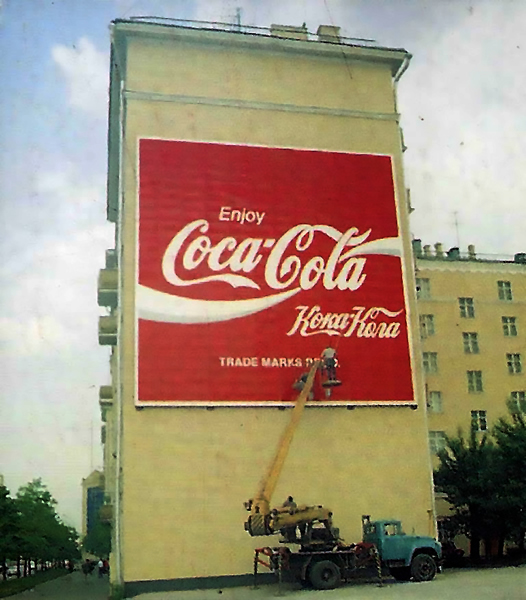
1992
The inaugural wallboard on a prominent square in Moscow was indeed commissioned by Coca-Cola.
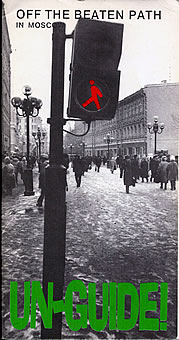
1992
Even if you made a fair amount of business in rubles, only dollars could help to feel "rich". Un-guide was designed for foreign tourists and had more connections with the culture of the original "Russkie" than the Soviet guides published by the Ministry of Culture.
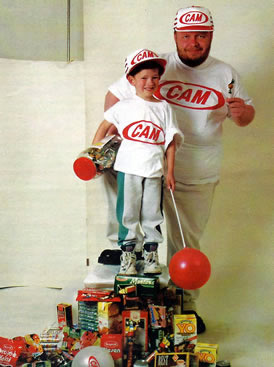
1995
It was tempting to create a campaign featuring a famous personality. In Russia, we didn't have stars in the same sense as America, so we invited Sergey Krylov, a well-recognized singer known for his complexion, for a grocery-store chain campaign. Sergey didn't have any complexes and even ran a club with the slogan "Big Man of all countries, unite!" Despite the unconventional choice, the optimistic approach paid off, and we won the Best Campaign in Russia award.
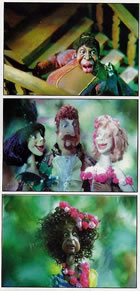
1995
My passion for stop-motion animation drove me to produce animations independently. I commissioned a script based on "Cabbages and Kings," by O. Henry, and assembled a team of talented artists and animators to create a half-length production. Although the movie was completed after I moved to the U.S., I'm grateful for the opportunity to have supported my colleagues along the way.
1992
In 1992, I founded the Moscow International Biennale of Graphic Design Golden Bee. This initiative turned out to be incredibly successful, as the festival has continued to thrive even after my departure from the country in 1996. Remarkably, it is still run by the same team that started it more than 20 years ago. Today, Golden Bee stands as one of the most significant events in the world's professional calendar. Notably, Golden Bee 11 (2014) received around 15,000 artworks from 60 countries, making it arguably the world's largest award-exhibition of its kind.
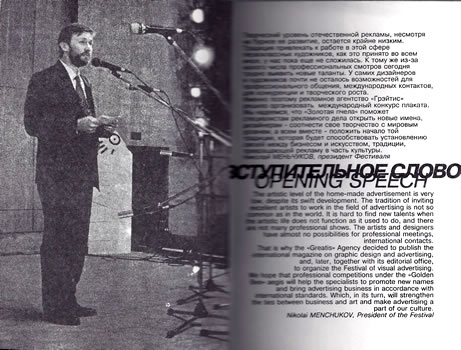
1992
Opening speech on the first Moscow International Biennale of Graphic Design Golden Bee.
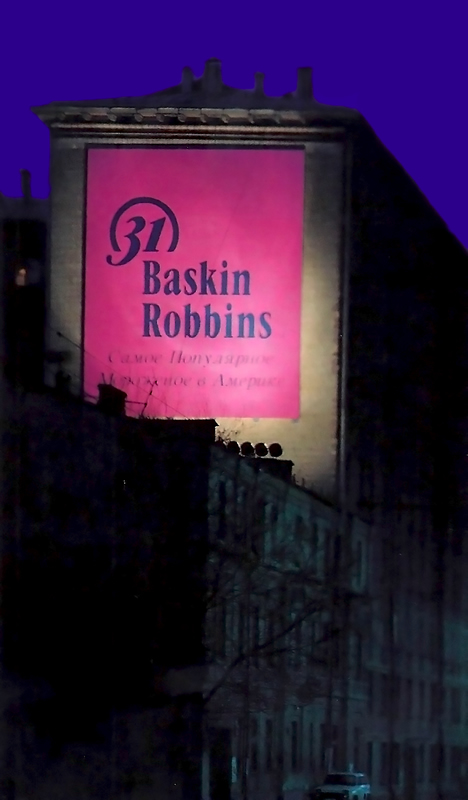
1993
In 1993, one of the challenges we faced was incorporating lighting capability into billboards to enhance their advertising value during the long Moscow winter nights. Once we figured out the electrification process, the Moscow winter nights became a highly beneficial factor for outdoor advertisements - billboards became the only visible thing out there. While it may seem basic now, that's how it all began.
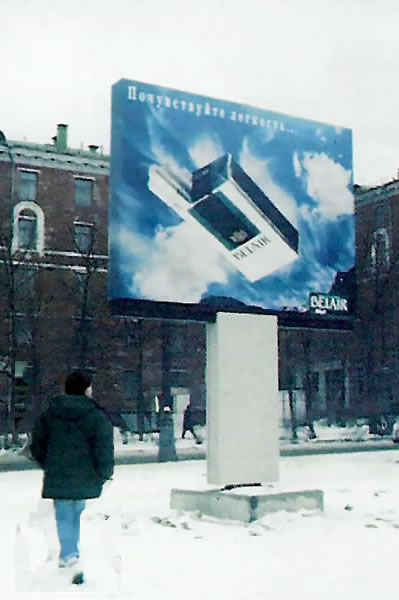
1993
It's a bit embarrassing to admit, but I did work on advertising campaigns for cigarette brands, some of which were successful. However, those experiences taught me invaluable lessons in advertising. Interestingly, at the time, smoking was permitted even in places like McDonald's, reflecting a different societal norm.
Reflecting on it now, I realize I learned more from those advertising experiences than I did from working on a political party campaign during Russia's first democratic congressional elections that year. Ironically, both the cigarette brands and the political party met similar fates in history, highlighting a satirical parallel between them.
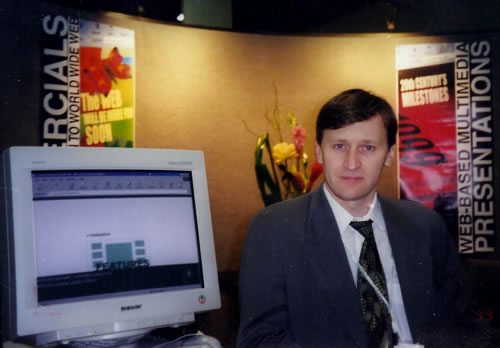
1998
Here I am at one of the first "dot com" conventions in Boston in 1998. I became incredibly excited about working on creative projects for internet businesses and delving into technology, to the point where I couldn't imagine doing anything else with my life. My "traditional" lifestyle abruptly ended, and a whole new "interactive" life began, almost simultaneously with the birth of the online advertising field. It felt like I was still building billboards, creating ads and commercials, but this time, everything was digital.
Later on, I realized that I had started from the wrong angle - I should have begun by building the technology for broadcasting ads instead of focusing solely on creating them. However, this mistake led me to rectify the situation, and ten years later, I effectively became known as the Father of Viewable Impression, a pivotal development in the online advertising landscape.
Followed by my digital life segment...
1999
In 1999, I introduced a groundbreaking concept to web advertising: Webmercials. Before video became available on the Internet, Webmercials were 15-20 second animations made in Flash, strategically placed as gate intros to webpages. These ads utilized sound and high-quality vector graphics to convey messages, even over a 28.8k modem connection, with no loading time.
However, at that time, I hadn't yet developed any distribution technology, and unfortunately, there were no ad serving options available for managed cross-website distribution of these ads. As a result, banners dominated the web advertising landscape for the next fifteen years - but only temporarily.
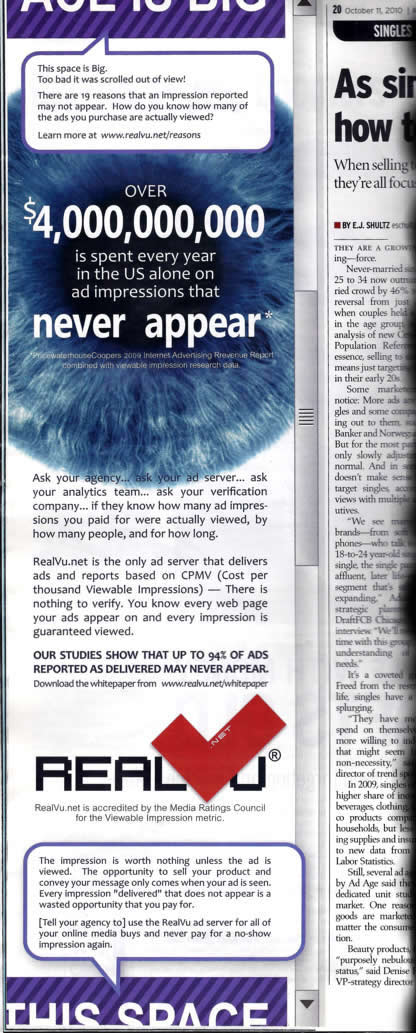
2010
The first advertisement introducing Viewable Impression metrics technology to the market appeared in Advertising Age on October 11, 2010. As the Chief Technology Officer for RealVu in 2008, I spearheaded the introduction of Viewable Impression technology to the Media Rating Council (MRC). After successfully navigating the audit required for the first accreditation of Viewable Impression metrics technology by the MRC in 2009, Viewability was formally established as a priority under the 3MS (Making Measurement Make Sense) initiative in June 2011. Additionally, in March 2014, the MRC announced the lifting of advisories for transacting on viewable impressions, effective immediately for display advertising and lifted on June 30 for video ads.

